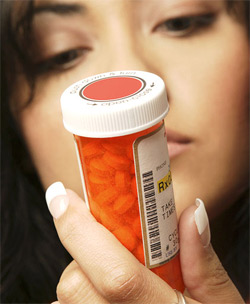 A study has concluded that there is a surprising futility in drug labeling. Any box or bottle of over-the-counter (OTC) medicine lists its active ingredients prominently on the label. But are consumers using that information to make wise choices about taking two or more OTC drugs at the same time? Probably not, suggests a new study in the Journal of Public Policy & Marketing.
A study has concluded that there is a surprising futility in drug labeling. Any box or bottle of over-the-counter (OTC) medicine lists its active ingredients prominently on the label. But are consumers using that information to make wise choices about taking two or more OTC drugs at the same time? Probably not, suggests a new study in the Journal of Public Policy & Marketing.
“A consumer who takes a cold medicine containing, for instance, acetaminophen, may see nothing wrong with taking an additional medicine that also contains acetaminophen,” write authors Jesse R. Catlin (California State University, Sacramento), Connie Pechmann (University of California, Irvine), and Eric P. Brass (UCLA). “But in that case, he or she will likely ingest at least 1300 mg of acetaminophen, and if those doses are repeated every 4-6 hours, the consumer will take in at least 5200 mg of acetaminophen per day, well over the limit.”
Study participants included people with and without medical expertise. They were asked to read the labels on the packages of two different OTC drugs and report whether the two contained the same active ingredients. They were also asked to judge the risks of taking the two drugs at the same time. Both groups of participants–those with and without medical expertise–correctly determined whether the two drugs contained the same active ingredients. But only participants with medical expertise used that information to weigh the risks of taking two medications together.
In other words, the typical consumer, who is unlikely to have any medical expertise, may very well believe that there is no danger in taking any two OTC medications at the same time–even medications with the same active ingredients. This, the authors suggest, reflects the fact that the average person believes OTC drugs to be risk-free. Because of that “naïve” belief, most consumers are at risk of overdosing on nonprescription drugs. The authors suggest that standard labels be supplemented with public service announcements and explicit warnings on the labels themselves.
“Programs to educate the public on the risks of double-dosing must clearly emphasize that even over-the-counter medications can be dangerous when combined or misused.
More broadly, this study suggests that it is vitally important for practitioners and policymakers to address safety issues by first working to understand what is at the root of the consumer’s misunderstanding,” conclude the authors. The study is done by American Marketing Association.